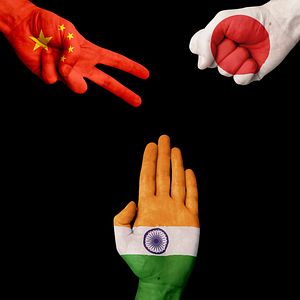Chinese President Xi Jinping is set to begin his three-day visit to India today, with significant expectation surrounding Chinese investment, and also the possibility of improving dialogue over the two countries’ ongoing border dispute. While any progress on the border issue will probably be symbolic (the two remain unable to even agree on the Line of Actual Control (LAC) between their two armies), China is much more interested in making significant investments in India. China seeks not only to tap India’s need for cheap infrastructure, but also to counter Japanese pledges of 3.5 trillion yen ($32.6 billion) in loans and investment.
On September 10 just before Xi’s visit, an Indian Army patrol spotted Chinese troops and heavy machinery building a temporary road into what is claimed as Indian territory near the LAC in eastern Ladakh. The two sides apparently “faced off” according to the Hindustan Times before the Indian Army destroyed a portion of the road at night. The incident lasted five days with the Indian government saying it would “firmly defend” its border, according to Reuters. Incidents are still quite frequent along their shared eastern border, with the Indian government claiming 334 Chinese infringements this year to August. It is difficult to see what kind of concessions either of these nationalist leaders could make, particularly China, which clearly has the upper hand in terms of infrastructure and military manpower in the region.
China’s investment offerings are likely to be much better received. Indian officials familiar with the discussions say that China plans to offer two big-ticket investments: $50 billion to modernize India’s railway and another $50 billion for general infrastructure, including roads and ports. While bilateral trade was $65 billion last year, the two sides have set a target of $100 billion in trade for 2015, with both agreeing that “the potential for trade is much more.”
China is likely trying to minimize the border dispute and play up its significant investment plans (potentially twice Japan’s) in order to show that it is a better partner for India than Japan is. However, while Beijing’s offer is larger, it is not mutually exclusive. In this respect India is showing itself to be an adept regional player. While still in desperate need of investment, particularly for rail, New Delhi is looking to manage ties with both economic giants. It can offset China’s larger investments with greater political and security ties with Japan, which Prime Minister Narendra Modi did during his recent trip to Tokyo. Barring an unforeseen breakthrough on the Chinese-Indian border dispute, India’s balancing act appears set.
































